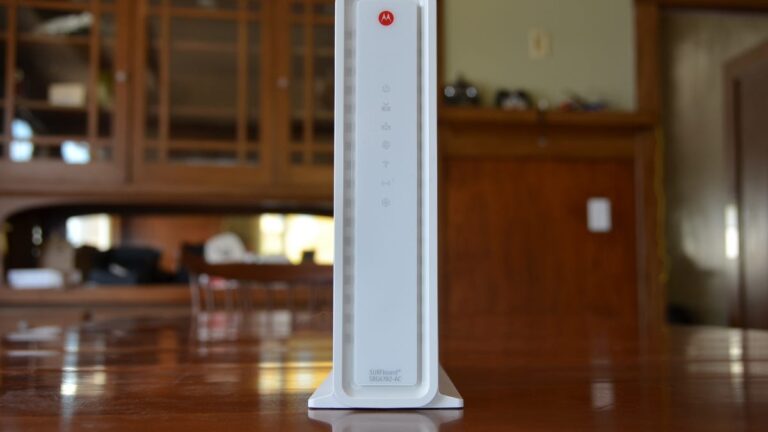When you get a new router, it’s tempting to just plug it in and get online as quickly as possible. But it’s worth taking a few extra minutes to change some of the settings first. Here are some pointers for setting up your new Wi-Fi router that will have you browsing safely and speedily in no time. I’m an Xfinity (Comcast) subscriber, but the tips here should translate no matter what internet provider you use.
Change the network name and password
To change the username and password, you’ll need to log into your provider’s website or mobile app. Log into your account and look for a section for Network or W-Fi settings. On Xfinity’s website, I clicked WiFi Details to change the name of my Wi-Fi network and set a new password. Choose a password — or better yet, a passphrase — that you’ll remember but isn’t too easy to guess.
Choose a security mode
If you set a strong password for your router, then you’ve taken the first step of securing your network rather than leaving it open for anyone to access. With a password set on a modern router, you are most likely using WPA2 or WPA3 encryption.
WPA, or Wi-Fi Protected Access, is a 256-bit encryption protocol that is more secure than the older, weaker WEP standard that uses 64- or 128-bit encryption. WPA2 improves upon WPA by using a stronger encryption algorithm. It uses the Advanced Encryption Standard (AES) algorithm that is more secure than WPA and its TKIP (Temporal Key Integrity Protocol) algorithm. WPA3 stepped up the security measures even further, strengthening password security, data encryption and smart home connections.
Many routers offer a mixed mode of WPA2 and WPA3 so that older devices that pre-date WPA3 can connect to your network. WPA2 has been around for more than 10 years so it’s unlikely that your router is still using WPA encryption. When choosing the security mode for your router, I would go with WPA3 and only switch to mixed mode if you have an ancient device that won’t connect to your WPA2-protected network.
Check network mode and bands
If you’re using a newer Wi-Fi 7 router, it broadcasts in three frequencies: 2.4, 5, and 6 GHz. These are the frequencies with which your wireless network broadcasts radio waves to transmit information. All three frequency bands should be on by default, but check the advanced settings of your provider’s website or app to check the status of both to make sure they are active.
The 2.4GHz band is more crowded because it’s the frequency many common electronics in your household use, from cordless phones and baby monitors to garage door openers and microwaves. You might run into network interference with 2.4GHz, but it allows older devices to connect to your network. The 5GHz band is less congested and faster but has shorter range than the 2.4GHz band. The 6GHz band is significantly faster than the other two, but it works best when your devic around 15 feet or closer to your router.
With all three modes operating, your router will choose the best mode for each of your network devices.
Enable parental controls
Look for a Parental Controls or Access Restrictions section to establish some boundaries for your kids’ devices. With Xfinity, click the People tab to set up profiles for your kids. You can assign devices for each profile and then hit Pause for any or all devices of a profile to give them a break from Instagram, Snapchat, texting and everything else on the Internet.
You can also enable parental controls for a profile to “reduce the risk of accessing objectionable websites and apps and enable protective search settings for Google, Bing and YouTube.” You’ll also find the option to set active hours for your kids’ devices. Xfinity calls it Bedtime mode, which lets you set the hours the internet is and isn’t available. There are different options for weeknights and weekends.
Set up guest network
Creating a guest Wi-Fi network saves you from potentially giving visitors access to shared computers and files on your network as well as the hassle of needing to tell them your complicated or embarrassing Wi-Fi password. In your account settings, look for Guest Network or Home Hotspot.
With Xfinity, I couldn’t find this setting with the other Wi-Fi settings but instead had to move a level up to my general account settings. From the main account page, it was listed under Settings. With it enabled, Xfinity started broadcasting a separate network called “xfinitywifi” that guests can use without needing to track me down for a password.
Read the full article here

